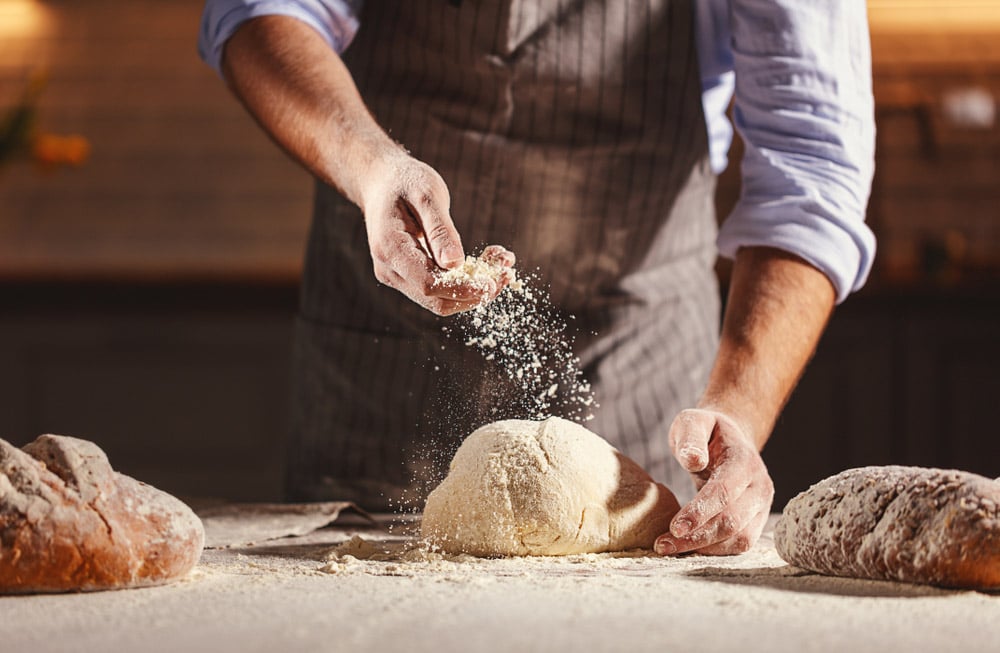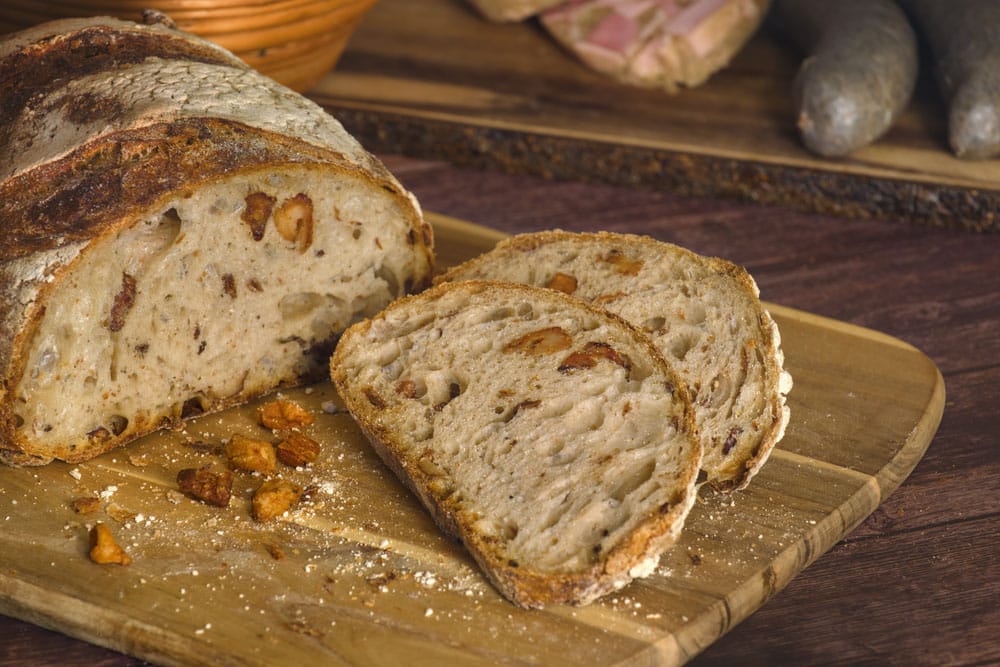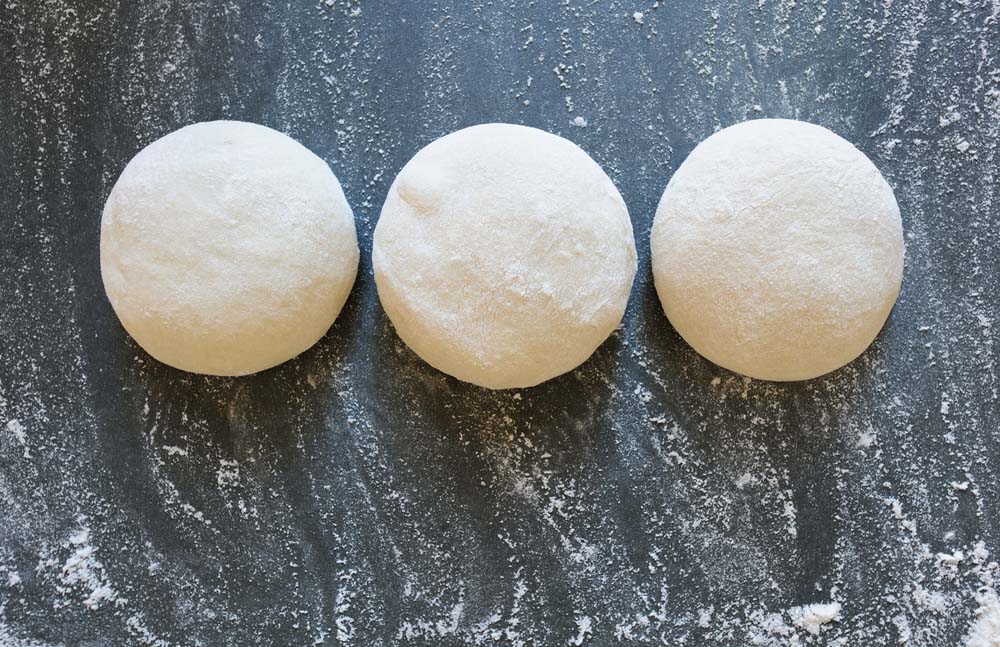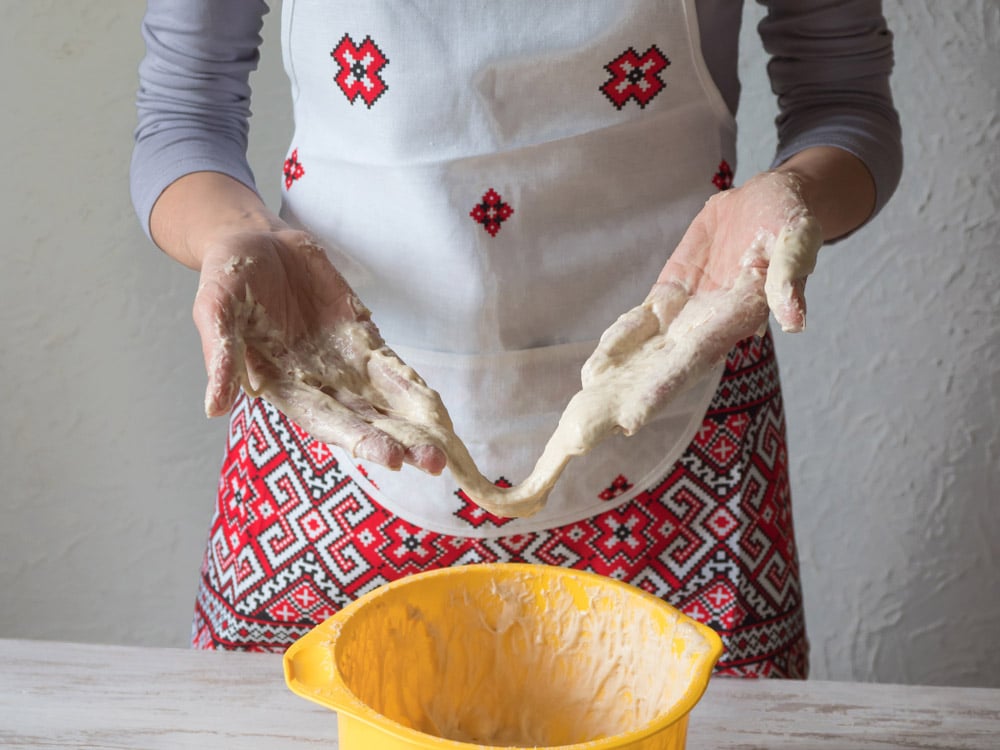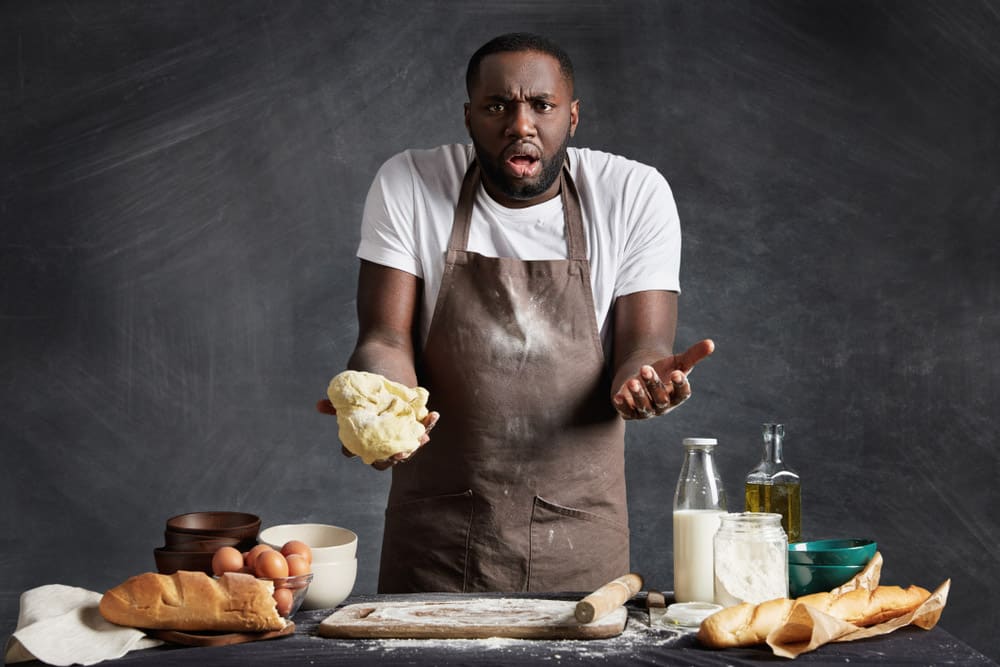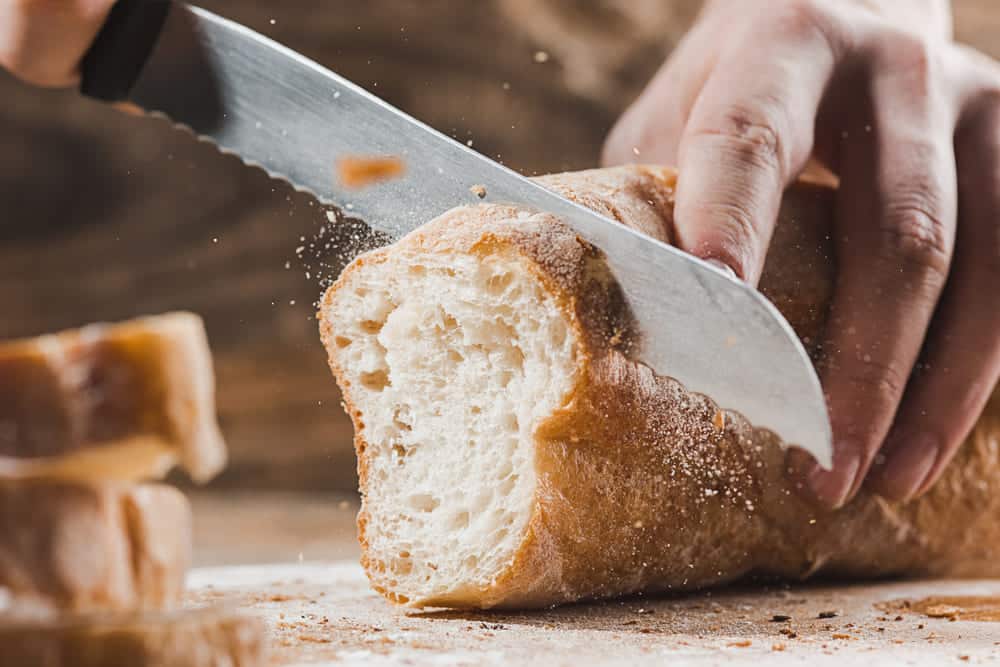
Bread is a staple food for people all over the world and one of the most affordable sources of carbohydrates. It is a convenient, cheap form of food, and when it’s homemade, it doesn’t have any artificial additives.
What can be more delicious than biting into fresh, warm bread right out of the oven and topping it with butter and cheese or butter and jam?
It can be disappointing, though, when the bread crust is too hard. Your homemade bread’s crust should be dark in color and crunchy, but never hard.
Homemade Bread Crust Too Hard
There are several reasons why your homemade bread could have a crust that is too hard –
- High temperature
Temperature is an important aspect of baking homemade bread and getting the crust’s hardness right. Certainly, if you bake bread at a temperature that is too high, you’re going to get a crust that is too hard.
You’ll find that most of the recipes for bread require a fairly hot oven, around 375°. Always double-check your recipe and understand the recommended temperature. Over the years, thermostats can become inaccurate and then they may need to be adjusted by a professional.
Maybe use a slightly lower temperature because this will help you control how fast your crust browns. You also need to check your oven against the recipe.
A convection oven will bake bread faster than a conventional oven, meaning you may have to adjust the temperature of your oven accordingly.
- You’re baking your bread for too long
If you bake your bread for too long, you can end up with a crust that is too hard. Bread generally bakes for about 30 to 40 minutes. Baking bread at home can get tricky, because if you take the bread out too soon, parts of it can be unbaked.
The question of how long to bake your bread also comes down to the rising time, because the longer the dough rises, the harder the crust will be. Always make sure to adjust the temperature of your oven to the type of bread you’re making.
Also, if you’re unsure about your bread being baked through, test it by taking it out of the oven and tapping the base of it. A hollow sound indicates your bread is cooked through.
- Insufficient cooling time
When you remove your hot loaf from the oven, a lot of its moisture is trapped in the starch molecules of the bread’s crumb. Enough cooling time allows some of the moisture to dissipate from the starch molecules in the crumb of the bread.
This is then absorbed by the crust, and it softens. If you don’t let your bread cool enough before you cut a slice, you won’t have given your loaf’s crust sufficient time to absorb the moisture, ensuring your crust remains hard.
For sourdough bread, for example, allow it to cool for at least 3 or 4 hours at room temperature to allow the moisture to settle and the flavor to develop.
Premature cooling results in a hard crust with compromised flavor. Proper cooling time, however, will depend on the size of your loaf, the flour you used, and the room temperature.
- Degassing
Degassing is an important part of avoiding hard crust issues when making your own bread. Degassing dough release air trapped in the dough during the rising period.
Punching down the dough with your fist after it rises is important for getting rid of these air pockets formed during the fermentation process. Improper punching of bread destroys the cells responsible for holding air in the dough. This results in the bread crust becoming too hard.
Form a fist with your hand and then press it down gently in the middle of the dough to release air bubbles. Punching is an important step in making yeast bread, so make sure that you are degassing the bread properly.
- Too much moisture lost during baking
Moisture loss plays a big role in the dryness and hardness of the crust. The more moisture that is lost during baking, the drier the crust becomes, which ultimately results in a hard crust texture.
Smaller dough pieces lose a higher proportion of their moisture weight because of a higher surface area to volume ratio. Larger dough pieces lose less moisture to evaporation.
Long baguette loaves, in other words, lose a higher amount of moisture than the same weight of dough that is formed into a round loaf. Also, as previously stated, the longer you bake, the more moisture you lose.
Even if you bake your bread for a longer period of time at a lower temperature, the surface of the dough will lose moisture, resulting in a thick, dry, hard crust.
- You’re using the wrong flour
You need to know that different flours will alter the structure and flavor of your bread. The wrong flour leads to a harder crust. People often use all-purpose flour, not realizing that they need to use bread flour to make bread minus the hard crusts.
Expert bakers know that selecting the best bread flour is important for baking successful bread loaves. The different flours contain different kinds of gluten proteins, and this has an influence on what the flour does during baking.
So your choice of flour will have a huge impact on the texture of your bread and crust.
- You’re using the wrong recipe
Have you had a good look at your homemade bread recipe? You have to check your recipe. The reason for this is that there are homemade bread recipes that are supposed to result in a thick, hard crust.
So the simple solution is to avoid recipes for these types of crusty breads if you’d prefer a soft outer layer. Bread that has a soft crust usually has added fat in its recipes. Examples of this bread with a higher fat content include zucchini bread or brioche.
Adding fat or olive oil adds moisture. Adding a small amount of olive oil will usually result in bread with a lighter, softer crust.
Roll up your sleeves to bake bread with golden crusts
Baking bread should be simple, seeing that the ingredients are essentially just water, flour, and yeast, yet it can be tricky to get the right consistency.
Use these bread baking tips to bake better bread with the ideal rise and golden crusts that aren’t too hard or too soft, but just right in between.
